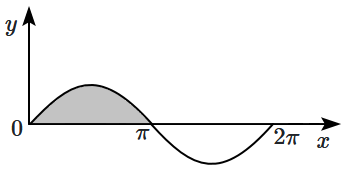A particle moves in the XY plane and at time t is at the point whose coordinates are . Then at what instant of time, will its velocity and acceleration vectors be perpendicular to each other?
(1) 1/3 sec
(2) 2/3 sec
(3) 3/2 sec
(4) never
A motor boat of mass m moving along a lake with velocity . At t=0, the engine of the boat is shut down. Magnitude of resistance force offered to the boat is equal to rV. (V is instantaneous speed). What is the total distance covered till it stops completely?
(1)
(2)
(3)
(4)
A particle is moving along positive \(x\text-\)axis. Its position varies as \(x = t^3-3t^2+12t+20,\) where \(x\) is in meters and \(t\) is in seconds. The velocity of the particle when its acceleration zero is:
1. \(1~\text{m/s}\)
2. \(3~\text{m/s}\)
3. \(6~\text{m/s}\)
4. \(9~\text{m/s}\)
Two forces and are acting on a particle.
The resultant force acting on particle is:
(A)
(B)
(C)
(D)
and , then angle between vectors A and B is:
(1)
(2)
(3)
(4)
If vectors \(\overrightarrow{{A}}=\cos \omega t \hat{{i}}+\sin \omega t \hat{j}\) and \(\overrightarrow{{B}}=\cos \left(\frac{\omega t}{2}\right)\hat{{i}}+\sin \left(\frac{\omega t}{2}\right) \hat{j}\) are functions of time. Then, at what value of \(t\) are they orthogonal to one another?
| 1. | \(t = \frac{\pi}{4\omega}\) | 2. | \(t = \frac{\pi}{2\omega}\) |
| 3. | \(t = \frac{\pi}{\omega}\) | 4. | \(t = 0\) |
Six vectors through have the magnitudes and directions indicated in the figure. Which of the following statements is true?
1.
2.
3.
4.
\(\overrightarrow{A}\) and \(\overrightarrow B\) are two vectors and \(\theta\) is the angle between them. If \(\left|\overrightarrow A\times \overrightarrow B\right|= \sqrt{3}\left(\overrightarrow A\cdot \overrightarrow B\right),\) then the value of \(\theta\) will be:
| 1. | \(60^{\circ}\) | 2. | \(45^{\circ}\) |
| 3. | \(30^{\circ}\) | 4. | \(90^{\circ}\) |
If a curve is governed by the equation y = sinx, then the area enclosed by the curve and x-axis between x = 0 and x = is (shaded region):


1. \(1\) unit
2. \(2\) units
3. \(3\) units
4. \(4\) units
The acceleration of a particle starting from rest varies with time according to relation, . The velocity of the particle at time instant \(t\) is: \(\left(\text{Here,}~ a=\frac{dv}{dt}\right)\)
1.
2.
3.
4.







